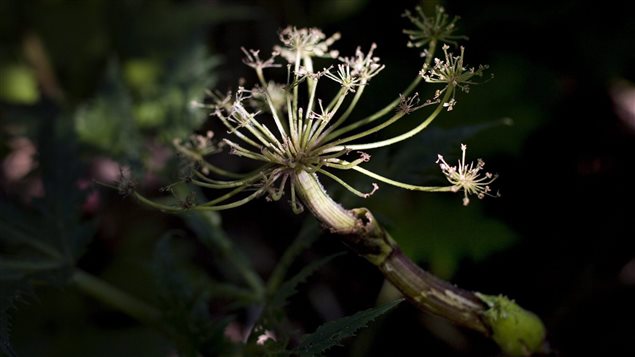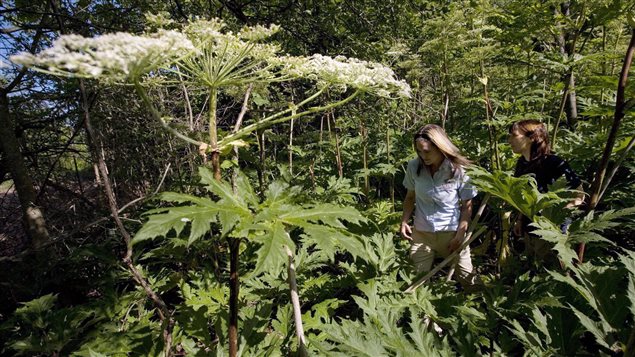The Nature Conservancy of Canada is urging Canadians to document sightings of the giant hogweed plant which it says can pose a serious health hazard for humans. The extremely invasive plant is thought to have come to Canada from Asia and Eastern Europe in the 1940s and is now found in the Atlantic Provinces in the east and in the provinces of Quebec, Ontario and British Columbia.

Plant can cause blistering, burns, blindness
If the plant’s clear sap comes into contact with the skin, exposure to sunlight will cause blistering third-degree burns. If it gets into the eyes it can cause blindness. The plant can also overcome native plants threatening biodiversity. It spreads especially quickly when seeds travel down rivers and streams. They also fly on the wind.
The conservancy suggests people who see the plant document it on apps such as iNaturalist. This provides information to scientists and to jurisdictions that seek to eradicate the plant.
Professional help is recommended
People who find the plant on their property are urged to get professionals to remove and dispose of it. Goggles, face masks, heavy gloves and protective clothing must be worn to avoid exposure. Plants should be dug up, left to dry and then put in black garbage bags in the sun for a week, advises the conservancy website. Or professionals can use herbicide in spring or fall.







For reasons beyond our control, and for an undetermined period of time, our comment section is now closed. However, our social networks remain open to your contributions.